Why in winters? Everyone asked when I was booking air tickets for Srinagar couples of months before peak winter in the valley i.e. end of January. I was also not very sure about this trip since winters are harsh in Kashmir valley but to see Dal Lake in the frozen state had long been on my bucket list and the trip had to postponed for various reasons earlier too. It was beginning of the January when the news flashed on my TV screen announced ‘Dal lake partially frozen’ for the first time in the season. With this news, the excitement level in me increased many folds. It is not that the Dal lake remains frozen for the whole winter but parts of Dal lake freezes many times with the drop in mercury level. It all depends on the weather of this period and a little luck!
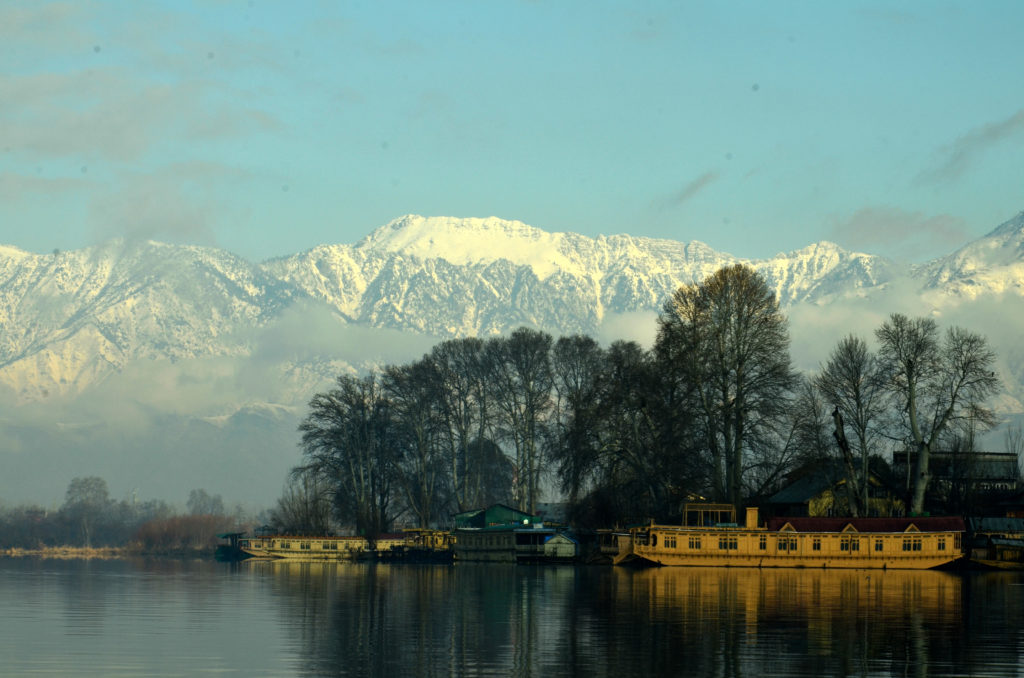
Fast forward to journey day- It was short morning flight from Delhi to Srinagar. As my plane started descending over the runway I saw the first glimpse of Kashmir valley below. It was covered by white layers of snow as if someone had sprinkled the white powder over the whole valley. As the plane touched down the runway I could see heaps of snow on both sides of the runway giving me a subtle warning as what to expect outside in terms of weather. I took out extra woolen from my handbag though It was still cozy inside the aircraft.
As I came out of the glass environs of the airport I was welcomed by the bitterly cold winds. It was little unnerving for me. I just experienced the cold weather of that magnitude for the first time in my life. Luckily the driver was waiting for me with a placard. I got inside the car with lightning speed! Once inside the car and relieved from the welcoming cold wind I asked the driver whether the lake has frozen. The driver answered in negative and started the ignition. I was little disappointed but also knew that it takes only a few hours to change the situation. We quickly reached our destination, a houseboat situated at Nigeen lake. Nigeen lake is one of the four basins of Dal lake but in beauty, this part is no less than the main part of the Dal lake. The best part is that the Nigeen lake remains relatively less crowded even during the peak season i.e. summers. My stay was booked in one of the houseboats run by Khilona Group of Houseboats. It was cozy inside and beside me, there was only one tourist from Singapore. A cup of hot Kahwah was waiting for me.
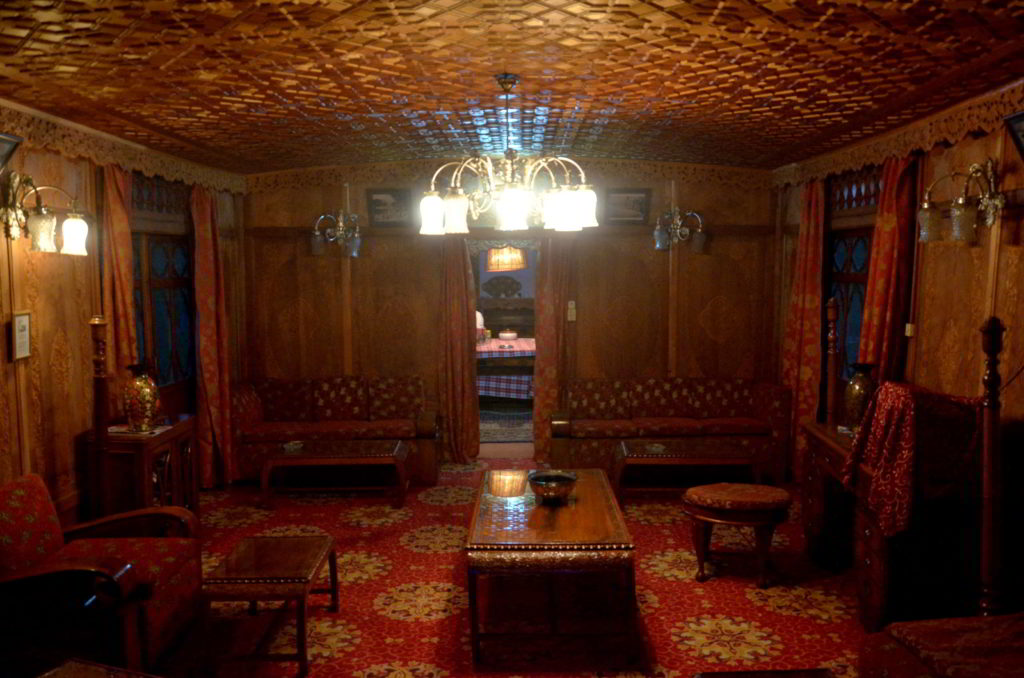
While having delicious Kashmiri Pulav for lunch I was just going through all kinds of thoughts. Most expressive of them was finally to be in Jannat or heaven, as we call Kashmir. I remembered there is an old saying said to be uttered for the first time by Mughal emperor Jahangir about Kashmir, which roughly translates into “If there is Paradise on earth, it is this; it is this; it is this”. I don’t know what actually made him say the above words but rest assured that Kashmir is one of the most beautiful places on the earth and precisely, for this reason, it is often referred as the crown of India and It would not be wrong if I may add that the Dal lake is one of the, if not the most precious gems that adorn this crown. For this very reason, Dal lake has been a source of inspiration to many poets, writers, painters, other artists etc for thousands of years. Dal lake is situated in the heart of Srinagar. The funny part is the word Dal is a misnomer as the word Dal already means lake. Surrounded by Zabarwan Mountain range Dal lake covers an area of 18 sq. Km(6.9 sq. miles) is the part of larger wetland which spreads over an area of 21 sq Km( 8 Sq.miles). Theoretically, this wetland is divided into four basins- Gagribal, Lokut Dal, Bod Dal and Nigeen Dal divided by causeways. But in practice, they are all interconnected with a system of intricate waterways. The shoreline of the lake is about 15.5 km (9.6 miles) long. Some of the most famous and beautiful Mughal era gardens, hotels, parks etc are lined on this here. The temperature remains pleasant around 10 to 12 degree Celsius during summers but winters are chilling and sometimes temperature plummets to -15 degree Celsius.
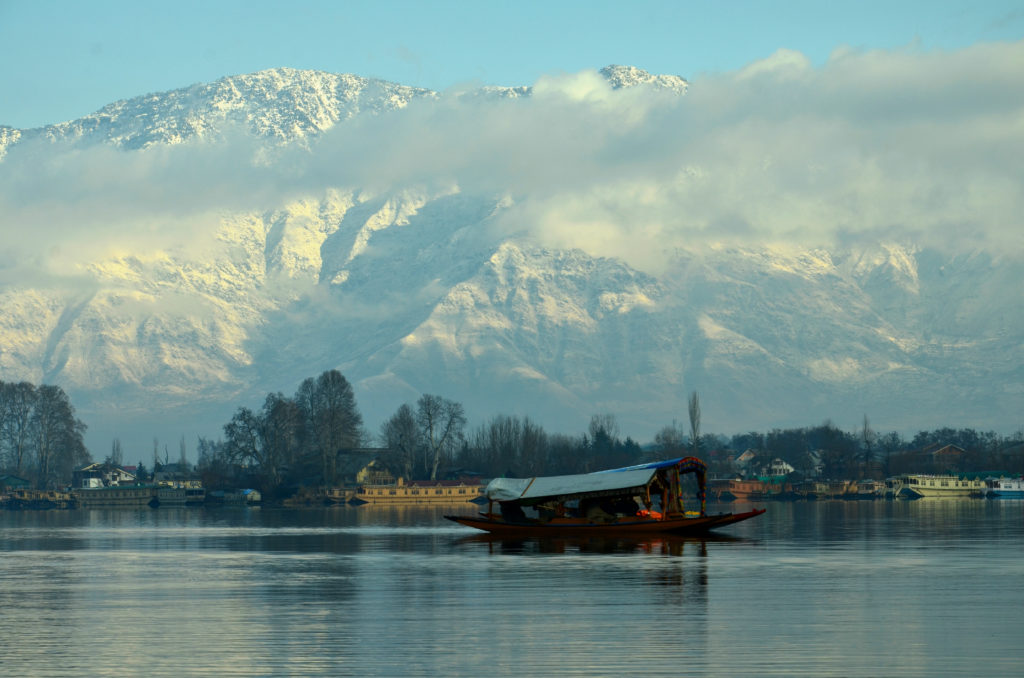
Keeping that in mind I covered myself in layers of warm clothes for the evening boat ride in search of any sign of the so-called frozen lake! Srinagar received heavy snowfall just three days back but Abdul, the boatman told it is difficult to find any frozen part as a little variance in temperature can quickly melt the layer of thin ice over the water. With this information, I started the boat ride and I was the only tourist besides the boats of various salesmen on their shikaras(wooden boats) trying to sell their goods like saffron, dry fruits etc. This system of selling goods from boats is unique to the Dal lake. As I moved forward the little clutter of floating shops gave way to the magnanimity of Dal lake. Slowly my Shikara started moving through the floating farms of lotus, lily and different vegetables. Abdul informed that the lotus don’t grow during winters but in summer the whole area we were passing through turn into a huge floating field of lotus/Lilly. It is a view to behold during summers.
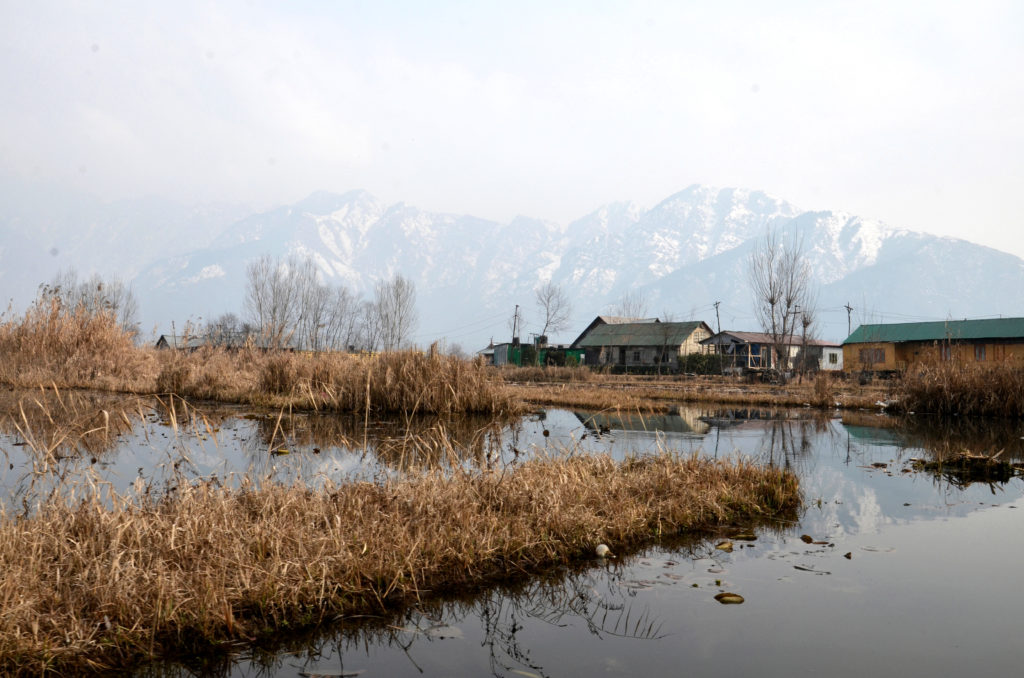
It was only around 3 pm but it was bitterly cold. Seeing my discomfort my Abdul provided me with a Kangri, a kind of portable fire pots made with earthen pots filled with glowing embers covered by wicker sticks from outside which people keep with themselves during the winter months for warmth. Well, for me It was like god sent. Slowly through the narrow waterways, crossing colonies on the waters of the lake we reached to the main part of the Dal lake. Very few tourists were present in this part also. The lake receives a large number of tourists during the summer months and thus favorite time for those associated with tourism business. It is estimated that nearly 50000 local people inhabit the lake in small islands and are directly or indirectly dependent on this lake. For long the mirrors like waters of this picture perfect lake attracted travelers of all hue. It has been a favorite destination of Indian Film industry. The main attraction of Dal lake is probably the houseboats and the small boats called shikaras. These beautifully carved wooden houseboats of varying sizes stand gracefully over the still water of the Dal lake are among favorite staying options for tourists.
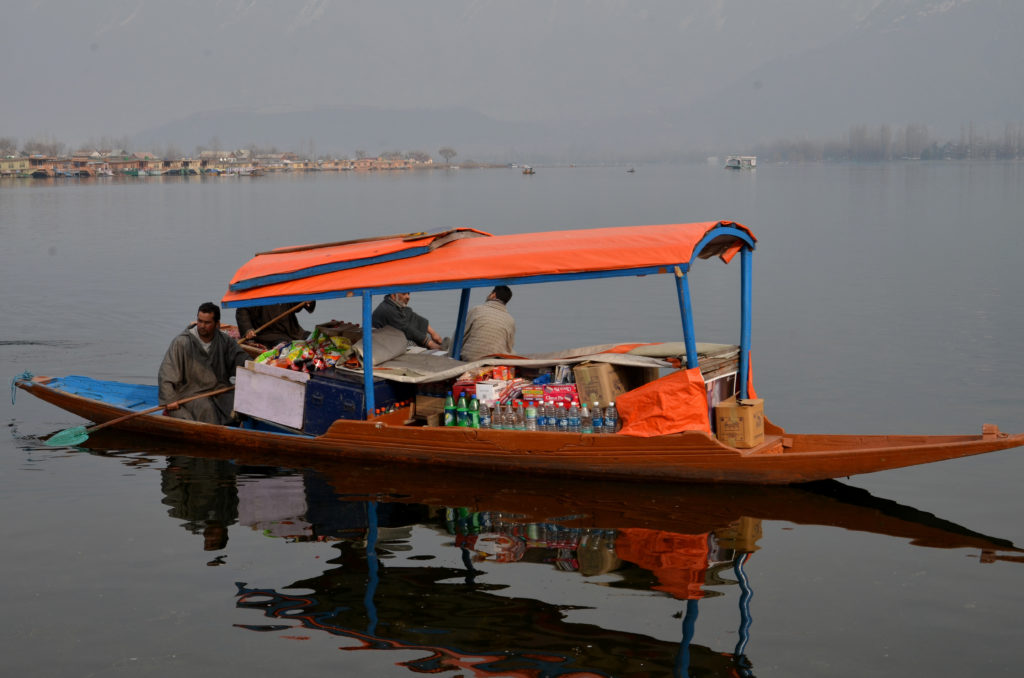
By that time the comfort level between Abdul and I had increased and on my request, he agreed to show me the part of Dal lake that is normally not frequented by many tourists. A few hundred meters ahead of the bustling market area lies the part of Dal lake which is used as the residence by the local populace. The area is full of narrow wooden bridges crisscrossing each other or going along the waterway we were traveling through. Houses made of wood and tin are everywhere. It was like any other densely populated locality; the only difference was that the everything was built over the waters of the lake. It was like a big floating village. I noticed that all these houses have multiple shikaras parked outside.
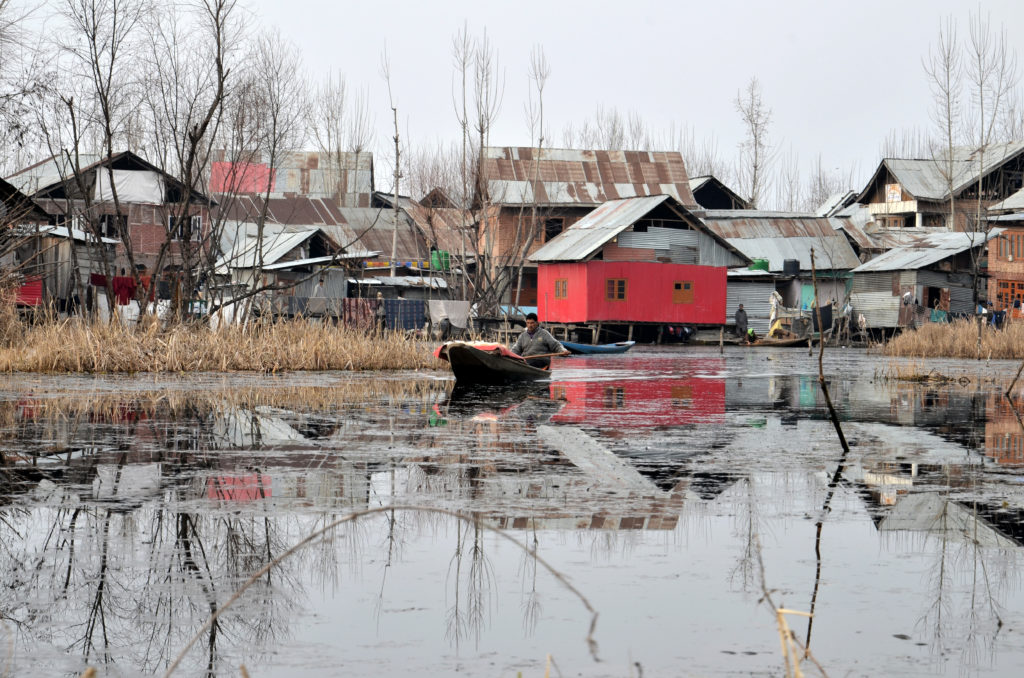
Shikaras are the main mode of transport for these people. But it is this density of people that makes the area dirty too. Apart from being involved in tourism activities a large number of people are dependent on the lake for farming and fishing. Unlike the clear waters in the main tourist areas, the water in these parts is not that clear. Floating plastic bottles, garbage and weeds made our passing through parts of this area a little unpleasant. But as a traveler, I was happy to explore what lies beyond the mirror like picture perfect clean waters of the Dal lake. Whether I would recommend a boat ride through these areas? Yes, off as this place provides numerous photographic opportunities which are unique and except for few stretches of this locality water is more or less cleaner.
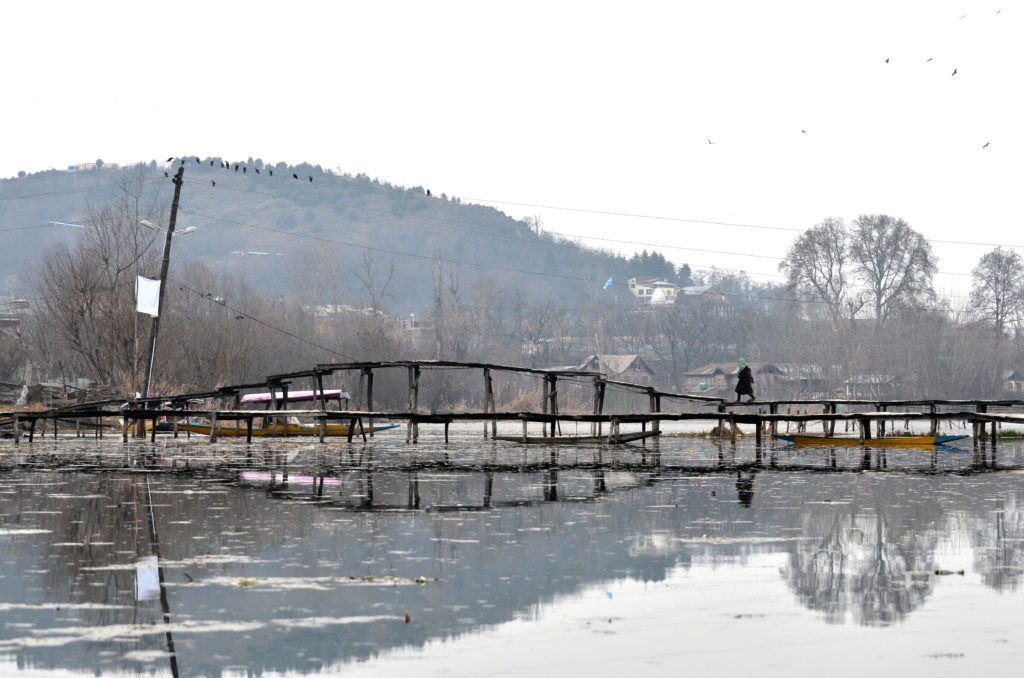
By 6.30 pm I was back in my cozy houseboat room. A hot cup of Kahwah, Kashmiri tea was waiting for me. I stayed there for four more days traveling to different places of interests and enjoying the local cuisines but the main purpose of my stay to see the frozen Dal lake was not fulfilled though I witnessed many frozen streams and lakes in and around these places in these four days. It was snowing regularly in adjoining areas of Srinagar but not in Srinagar. Well, it all depends on local weather conditions. As I reached Delhi Airport on my way back home I received a Whatsapp message from the owner of the houseboat showing a frozen part of the lake not very far from where I was staying, the photo was taken by Abdul. I smiled!
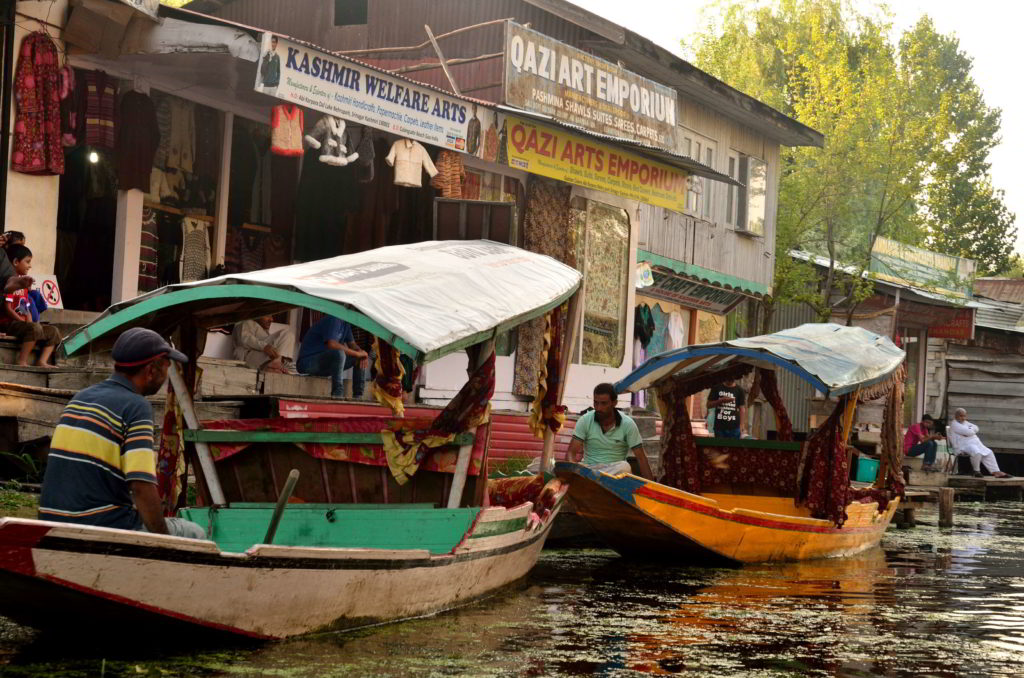
Not very long after this, I had one more chance to visit the Dal lake just for one day on my way to Ladakh. That trip was of course in the summer season. I choose to stay at the same place, same houseboat. As my stay was only for a day, I had to choose between visiting nearby popular tourist spots, beautiful Mughal era gardens etc and evening boat ride. No points for guessing! I choose the evening boat ride, again.
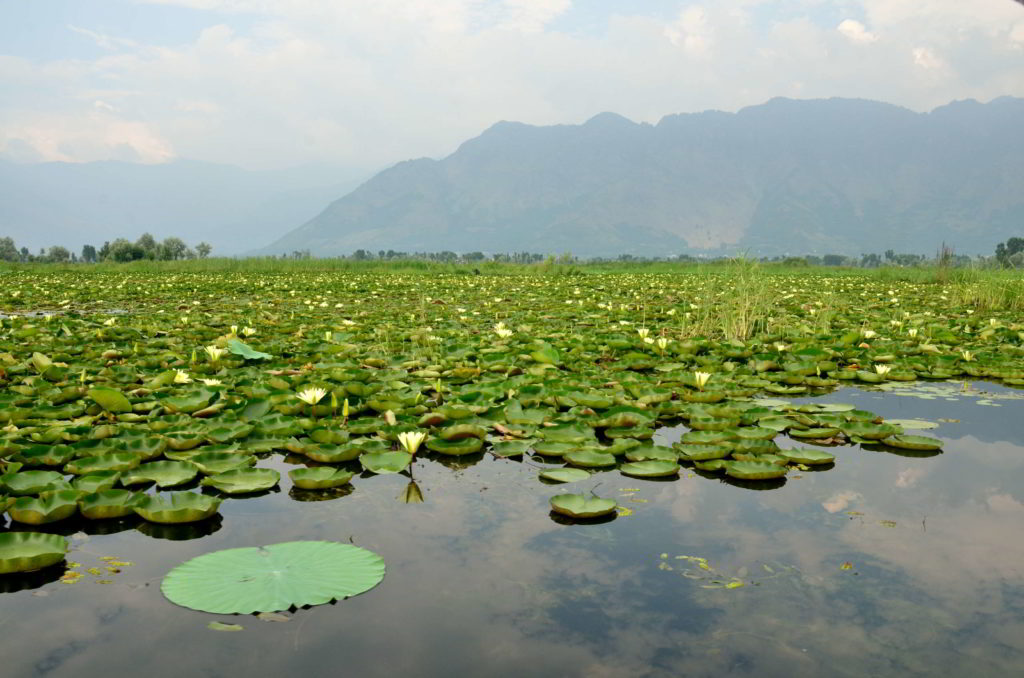
This time the scene was totally different. The lake was full of people, lotus fields were blooming with beautiful lotuses and the main tourist area of the Dal lake was full of colourful tourists. Locals were busy selling their goods from shikaras, there were floating tea shops, shops selling famous trout fish and other local delicacies.
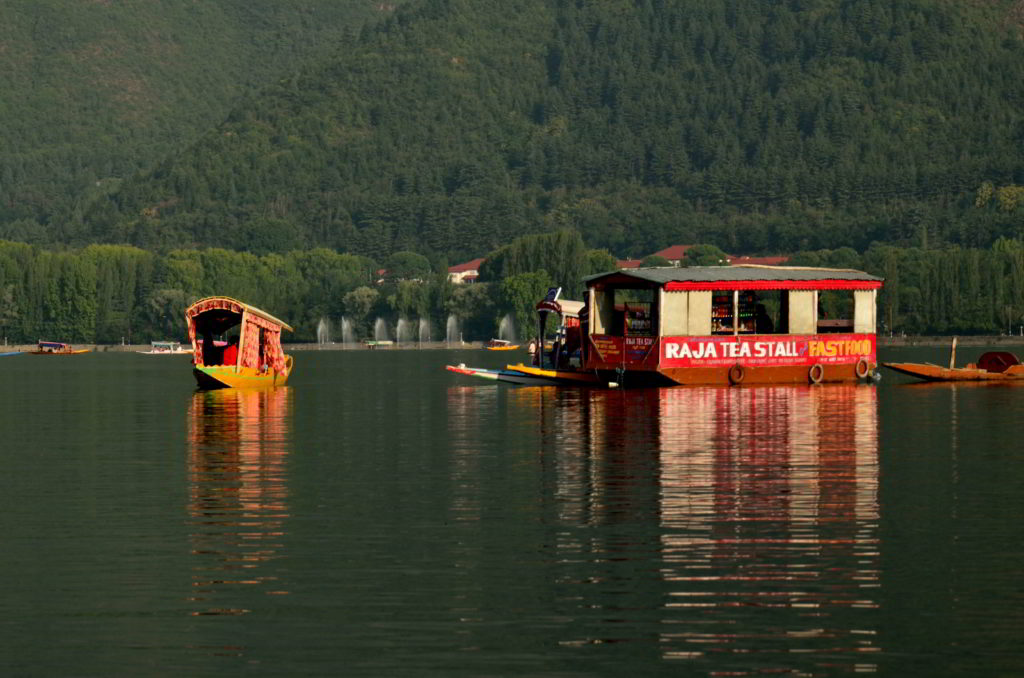
It was like a big congregation of people on shikaras! It was a scene to remember. As this period of the year day light remains for longer hours I insisted our boatman to take us back through the residential part of the Dal lake. He obliged and turned his boat to the same waterways we traveled during the previous winter. This difference was obvious, there were more locals to be seen, unique small traffic congestions because of large no shikaras on these narrow waterways, the place was full of activities like any other locality on the ground. It was a dreamy boat ride on the backdrop of Zabarwan Mountains on one side and setting sun over the Hari Parbat Fort on the other. But somewhere deep within wish to see the frozen Dal lake keep pushing me to visit it again, in winters!
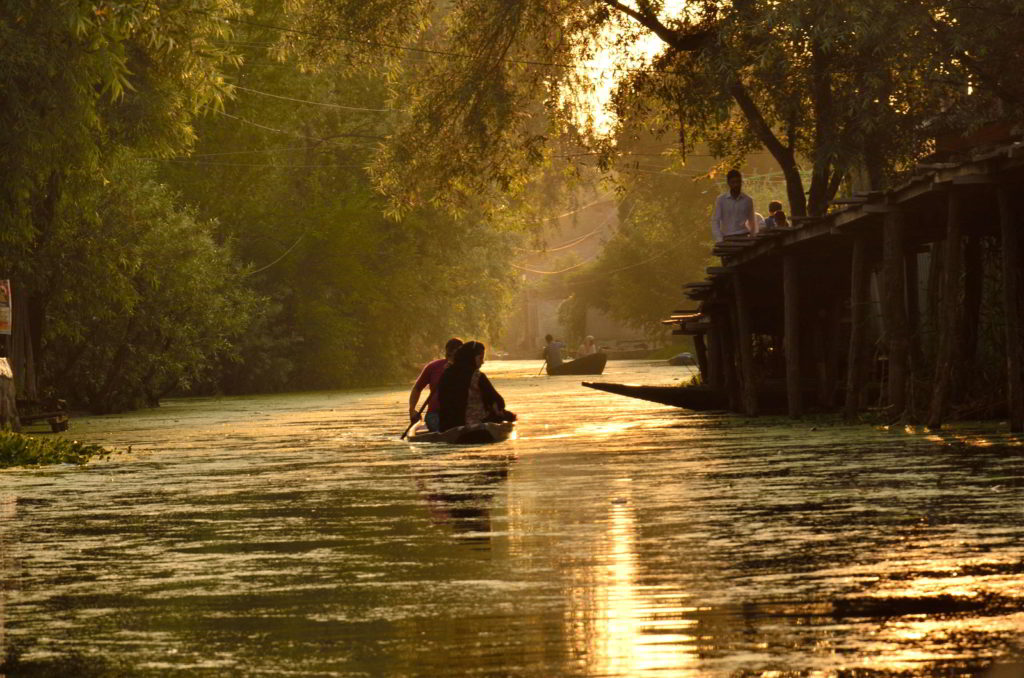
An Update: Government has recently launched massive cleaning exercise of Dal lake with the help of the locals. Hope their hard work will make the lake cleaner than before and one finds a better Dal lake on next visit.
Reaching there-
By Air– Srinagar is well connected by metros and many other major Indian cities. Nearest major Airport is Delhi. It takes only about an hour from Delhi.
By Road: Srinagar is very well connected by National Highway No. 44(previously NH 1A) from other parts of the country. The road passes through the legendary Jawahar Tunnel. It is advisable to follow weather reports during winter months as the road receives heavy snowfall during this season and some time roads are closed by the authorities due to this.
By Rail- Railway connectivity is only up to Jammu/Udhampur after that remaining journey is required to be completed by road (NH-44).
Best season to travel– Srinagar is an all-weather destination; there are many other places nearby Srinagar which is worth visiting. Each season has its own charm here. Summer months are popular among tourists when the weather remains very pleasant. Winters are harsh and temperature may plummet to -15 degree Celsius.
Stay- Being a city frequented by tourists from all over the world Srinagar has no dearth of hotels/ guest houses, from five-star category to simple hotels, thus suiting all budgets. It is advisable to Pre-book hotels to avoid any last minute hassles. One of the best places to stay in Srinagar is the houseboats on the Dal lake.
I stayed in one of the houseboats run by Khilona Group of Houseboats at Nigeen lake and found its services excellent.
Food- Srinagar (Kashmir) is very reach in terms of variety of foods it offers. One should taste Wajwan and Goshtaba, local delicacies made mostly of chicken and lamb meats. If traveling during the summer months then one should taste the famed trout fish. There is no dearth of options for vegans too.
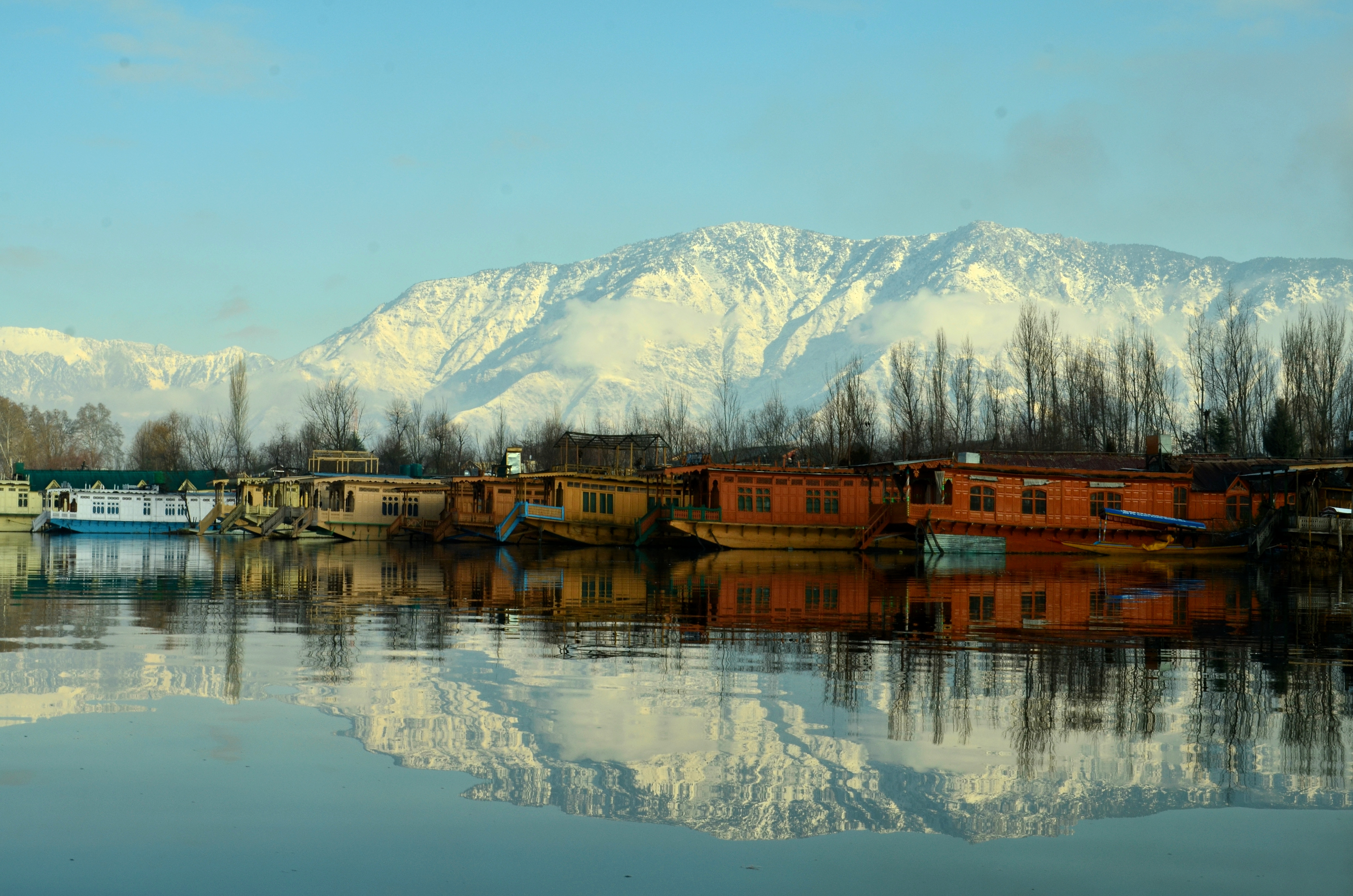
This place looks so beautiful Bikram. Magical too. Reminds me a little bit of the snow-capped hills here in New Zealand. Thanks for sharing 🙂
Ryan
Hi Ryan,
Yah! the place is indeed beautiful. Glad you liked the post. Thanks for your comment.
Great article Bikram, really enjoyed reading through this 🙂
The images you have uploaded look absolutely incredible.
Keep up the great work Bikram!!
Glad you like it, thank you.